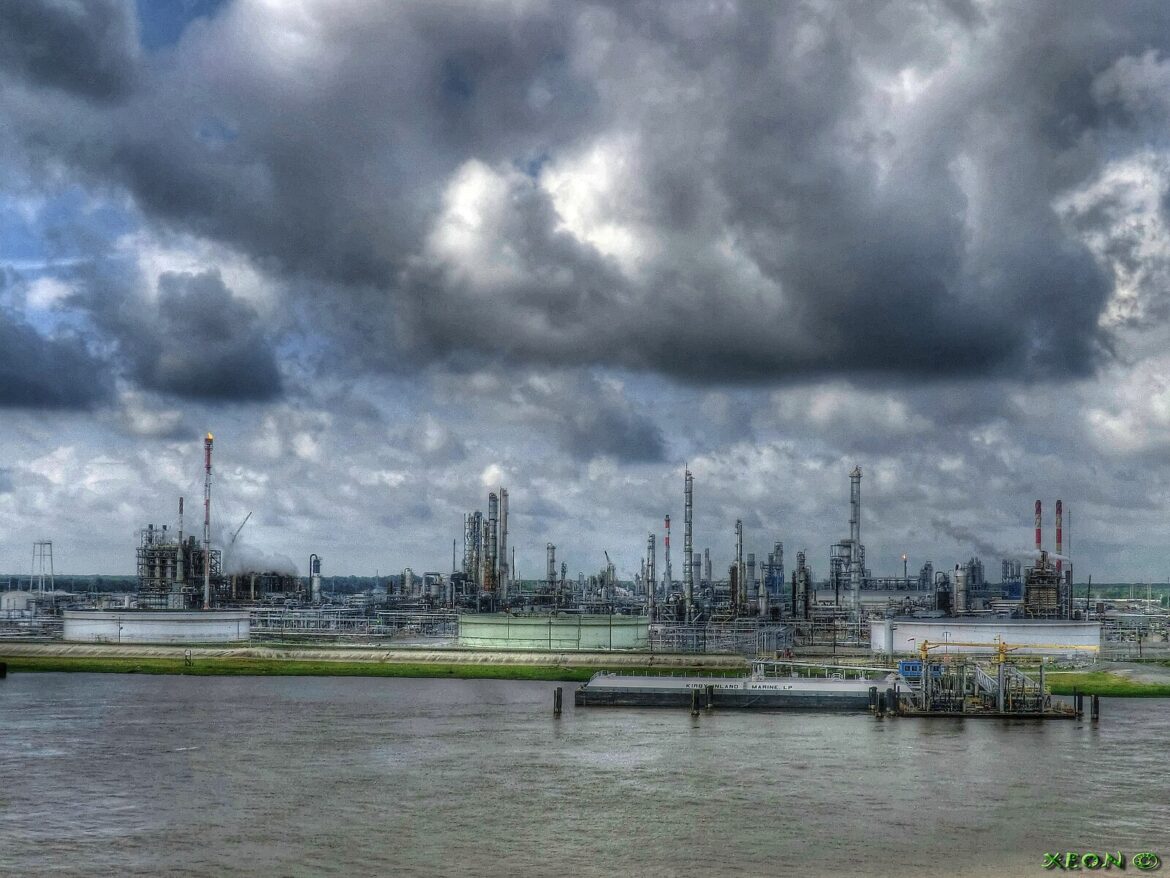‘Cancer Alley’ is the dark nickname given to an 85-mile stretch of land along the Mississippi River between the cities of Baton Rouge and New Orleans, Louisiana. The parishes (Louisiana’s equivalent of counties) along this stretch, known as the River Parishes, play reluctant host to about 200 oil refineries, petrochemical plants, and other manufacturing plants. Cancer Alley is one of the most polluted areas of the United States, garnering it the label of the ‘sacrifice zone,’ due to the severe health risks borne by its residents. Furthermore, these health risks disproportionately affect the Black population of the region, making Cancer Alley a clear example of environmental racism.
The disproportionate health risks borne by the Black residents of Cancer Alley contain historical roots in the institution of slavery. As a French colony and later as a state in the United States, Louisiana played a central role in the Transatlantic slave trade. The River Parishes are the historic location of the state’s largest concentration of plantations, the properties where enslaved Africans were brutally forced to labour in the fields and houses for over 200 years. Many of the residents who live in the River Parishes today are direct descendants of formerly enslaved people who remained in the area after the abolition of slavery in 1865. Today, 40% of the population living in Cancer Alley identify as Black, compared to 12% nationwide.
In 1901, Louisiana became the site of one of the world’s first productive oil wells, and later became the site of the first off-shore oil rig, making it one of the origins of the global oil and gas industry. Industrial plants moved into Louisiana en masse beginning in the 1960s, instituting natural gas refineries and petrochemical plants. Petrochemicals are the toxic byproducts of the oil refining process, which are then used to manufacture other materials such as plastics, rubber, and pesticides. When the industry first ascended in the 1960s, there was virtually no regulation of the pollution caused by these plants.
The first national environmental regulatory body was the Environmental Protection Agency (EPA), founded in 1970, while the Louisiana branch, the Louisiana Department of Environmental Quality (LDEQ) was established in 1984. The Clean Air Act and Clean Water Act, passed in 1972 and 1976 respectively, offered some federal protection for the environment and reflected a growing understanding of the harmful effects of pollution. However, the enforcement of these acts falls largely on the local environmental agency, in this case, the LDEQ, which has been historically lenient towards the powerful companies in Cancer Alley.
According to data collected by the EPA, Louisiana was ranked as the worst state for pollution, and among the worst for industrial toxins and pollution-attributed health risks. Several carcinogenic chemicals, including benzene, ethylene oxide, and chloroprene are dispelled into the air, the water, and the soil, infecting neighbouring communities. In 2016 and 2022, the EPA found that residents of Cancer Alley face 10 times greater health risk than anywhere else in the state, again with the risk concentrated in Black communities. Chief among the health concerns is increased cancer rates, respiratory issues, and reproductive issues.
The companies themselves try to downplay these health risks, shifting the blame onto the communities by emphasizing individual accountability for personal health. Meanwhile, the regulatory agencies, most notably the LDEQ, continue to issue permits for new plants without doing enough to limit existing ones. In an open letter to the LDEQ in 2022, the EPA expressed concern about the situation, identifying Cancer Alley pollution in excess of the Clean Air and Water Acts, the increased health risks it poses, their disproportionate effects on Black communities, and the LDEQ’s inaction.
Most recently, the LDEQ has come under fire for issuing permits for a planned future Formosa Plastics plant in St. James Parish. The proposed Formosa plant would be the largest of its kind in the U.S., doubling the amount of pollution currently affecting St. James Parish. Further, is set to be built directly adjacent to the town of Welcome, Louisiana, one mile away from an elementary school. RISE St. James, led by Sharon Lavigne, is a community organization dedicated to preventing the spread of petrochemical industry in Cancer Alley. The organization is currently fighting the proposed Formosa Plastic plant, primarily through injunctions against the LDEQ’s permits. In 2022, RISE St. James won a major victory when a district court judge vacated the permits for Formosa Plastics. However, in January 2024 an appellate court reversed this decision, allowing the permits to continue. Formosa will still have to obtain permits from other regulatory bodies, such as the U.S. Army Corps of Engineers, which could take years and will also require an environmental assessment.
In the meantime, RISE St. James and other organizations involved in the region will continue the fight to mitigate the insufficient regulations and environmental racism of Cancer Alley.
Edited by Willa Morrison

